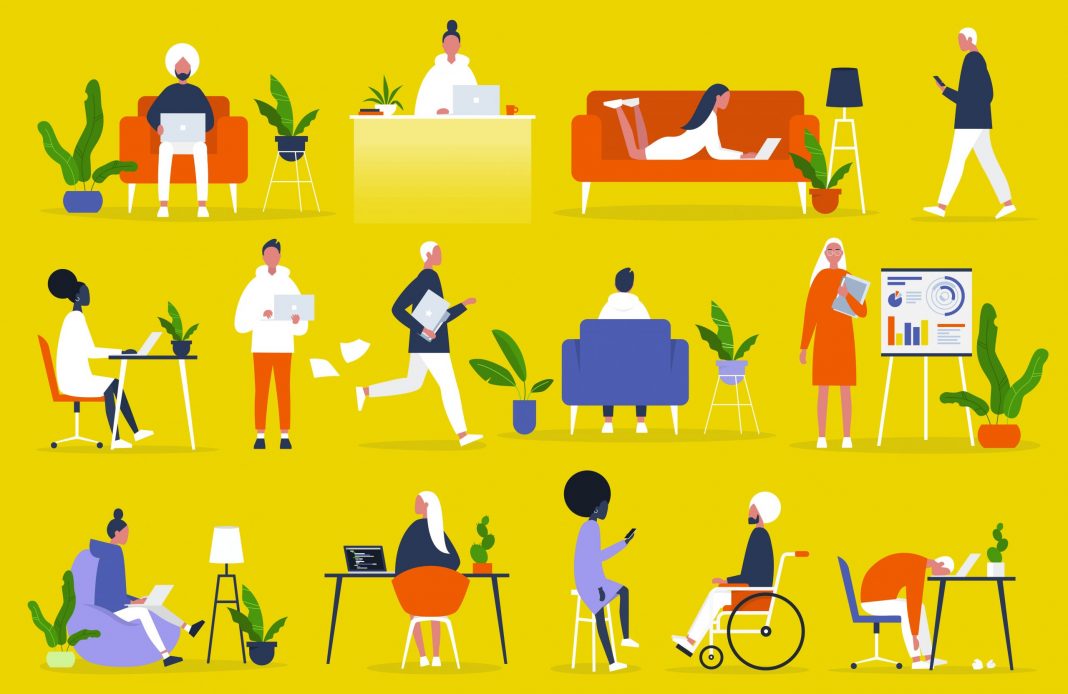Hassan Shaikh explores some fundamental elements to consider when it comes to developing the workplace for Gen Z.
Creating spaces that are people-centric requires workplace professionals to really dive deep into many different and important topics like gender, generation, and even geographical location. Developing a good understanding of the personas for the users of a workplace can positively influence the very workplaces we create. However, let’s start by making it clear that personas are not only about demographics but rather that personas are about understanding preferences and challenges that people face and then propose or develop solutions that could support them to thrive.

I would like to explore the topic specifically focused on generations as it is something that I have been looking at in my current research to understand how and to what extent it influences and effects workplace strategy. To me, Generation Z positions itself as one of the most exciting generations when it comes to change and challenging the status quo. Born between 1997 and 2012, Generation Z is a diverse and tech-savvy generation that has been exposed to a world of rapid technological advancements and global connectivity. They are said to have strong values, preferences, and unique characteristics that set them apart from previous generations. This generation is also very environmentally conscious and socially responsible, with a strong desire and drive to make a positive impact on the world. They are genuinely concerned about issues such as climate change, social justice, and mental health, diversity & inclusion and often support brands and organizations that align with their values.
When it comes to career preferences, Generation Z values flexibility, work-life balance, and opportunities for personal growth. They are generally entrepreneurial, with many seeking to create their own businesses or work in innovative or exciting industries. These factors are very important when it comes down to shaping the physical workplace environments and the influence it has on the overall workplace strategy. In saying that, I believe we need to question the need for only traditional Activity Based Working (ABW) thinking in our current workplaces and potentially consider a workplace strategy that is context focused rather than only activity focused. The value for the modern workplace with this in mind is to create the opportunity to be have more varied and more inclusive spaces that can support Gen Z and in doing that automatically create support for other generations that are currently in the workplace as well.

So where do we start? A good baseline in order to create a warm and inviting office space for Generation Z, requires an understanding of their unique preferences and values. The modern office environment should nurture productivity, collaboration, well-being, and personal growth.
Here are some fundamental elements to potentially consider when it comes to developing the workplace:
1. Seamless Technology:
As digital natives, Generation Z appreciates a workplace that embraces technology. Workplaces equipped with high-speed internet, wireless charging stations, and state-of-the-art tools to support their tech-savvy nature are more attractive. Other elements to be considered are the integration of smart office solutions, such as automated lighting and temperature control can enhance their workplace experience.
2. Adaptable furniture:
Generation Z cherishes flexibility and adaptability. Workplace design should consider office spaces designed with modular furniture, adjustable workstations, and a variety of seating options, including standing desks and ergonomic chairs. This will accommodate different work styles and preferences.
3. Welcoming Collaboration Areas:
Workplaces need to encourage teamwork and innovation by providing purposeful collaboration spaces. Huddle rooms, brainstorming areas, and open-concept layouts facilitate communication and idea-sharing are a good place to start and by incorporating writable surfaces and interactive displays could further support creative problem-solving.
4. Environmentally Conscious Design:
Generation Z is inherently environmentally conscious, so incorporating eco-friendly materials, energy-efficient lighting, and green initiatives will resonate with their values. Consider using natural materials, such as reclaimed wood and recycled textiles, and incorporating plants to improve air quality and create a biophilic design.
5. Wellness and Well-being:
Prioritize employee well-being by incorporating natural light, views to outdoor green spaces (if possible), comfortable seating, and designated relaxation zones. Provide resources and support for mental health and stress management, such as meditation rooms or quiet spaces for reflection.
6. Inclusive and Diverse Spaces:
Design spaces that are accessible and accommodating to all employees, regardless of their background, abilities, or preferences. This includes gender-neutral restrooms, adjustable workstations or furniture that use a universal design approach, and inclusive signage.
7. Opportunities for Growth:
Generation Z seeks personal and professional development. Create spaces for learning, such as training rooms, libraries, or designated areas for workshops and seminars. Encourage a culture of continuous learning and growth.
8. Friendly Social Spaces:
Generation Z values social connections and work-life balance. Incorporate communal areas, such as lounges, cafes, or outdoor spaces, where employees can relax, socially interact, and recharge.
9. Humanized Branding and Company Culture:
Reflect the company’s values and culture in the office design, creating a cohesive and inspiring environment. Use graphic design, colors, and design elements that align with the company’s mission and vision and not just some words that should inspire on the wall. Be real!
As we engage more and create platforms for better understanding people, we can further develop and advance our workplaces. But this could be a good starting point to stimulate that conversation.

Ultimately, the thinking in designing these types of spaces prioritize employee well-being, satisfaction, and productivity. By focusing on the needs and preferences of individuals and groups, these environments foster a sense of belonging, reduce stress, and improve overall work-life balance. They encourage collaboration, creativity, and innovation, leading to higher employee engagement and retention. Additionally, these spaces generally become more human-centric workplaces that promote inclusivity, diversity, and personal growth, creating a supportive atmosphere that empowers employees to reach their full potential. Ultimately, investing in a human-centric workplace design results in a happier, healthier, and more productive workforce, contributing to the long-term success of the organization.


